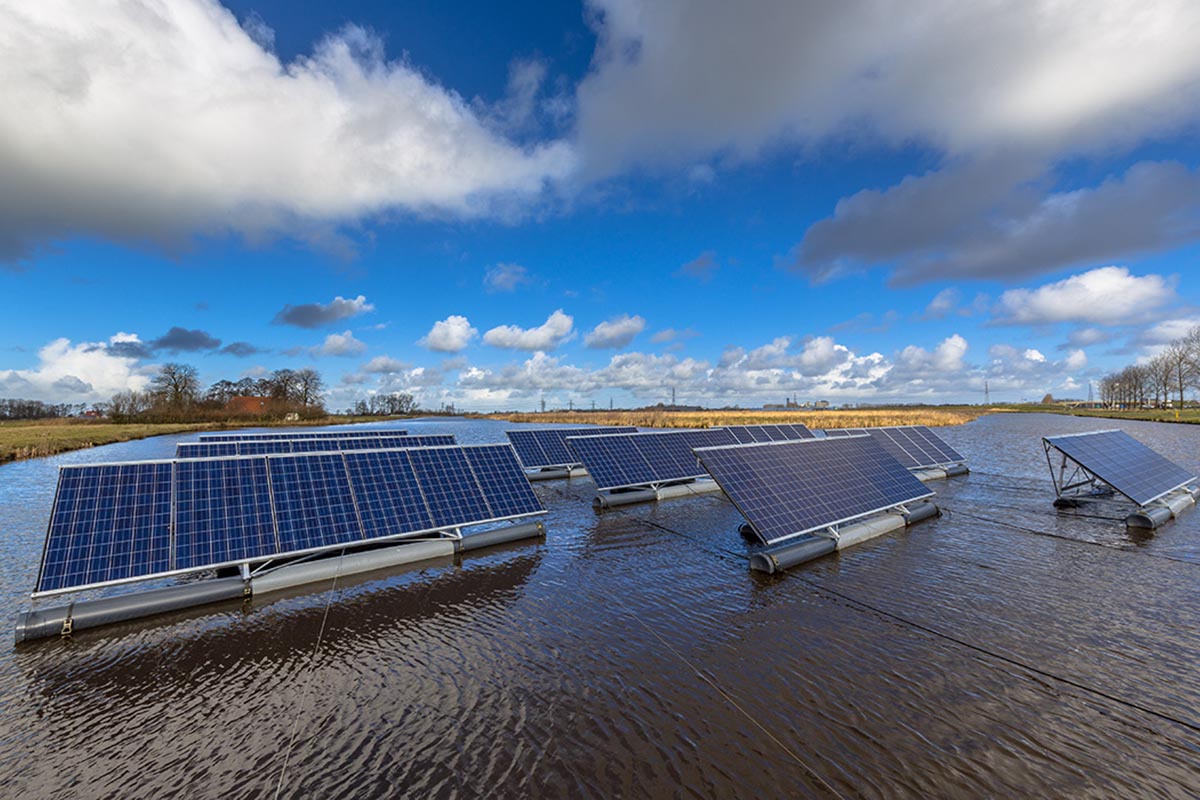We have more than 50 floating solar completed projects under our belt, done in nine countries, capable of generating up to 990MWp. Renewable Engineering has adapted to the change in the industry to serve and deliver according to the pace set of the growing floating solar PV market. The company has appeared and collaborated in four international projects for Research and Development, such as:
- DNVGL Floating Solar JIP
- BOOST Project
- Trust-PV
- Marine Energy Alliance (INTERREG North-West Europe)
We have the expertise when it comes to the design, engineering, and planning of marine renewable energy sources. We also provide complete support and technical services for floating solar farms in open water, quarry lakes, reservoirs, and other locations.
We monitor each project and work closely with renewable teams from across the globe to provide the services you require with the kind of quality you deserve.
Floating Solar Farms PV Design
- Logistics design
- Yearly energy production
- Production optimization
- Control room
- Management and supervision
Permit and Planning
- Human Impact Assessment
- EIA-compliant Navigation Risk Assessments
- Environmental Monitoring and Impact Assessment
- Pre-FEED Concept Development
Site Conditions
- FEED
- Financier and/or developer support
- Yearly energy production
- Soil survey, current, wave, wind, and GHI
- Site layout and selection
Floating Solar Farms PV Construction
Floater
- Package management
- Tender specifications
- Mooring design, interaction, and selection with AEP
- Suitability review
- HSEQ
- Technical Due Diligence
- Package management
- Tender specifications
- Mooring design, interaction, and selection with AEP
- Suitability review
Transport and Installation
- Cable installation, in-place, routing
- Marine engineering
- Package management
- Tender specifications
- Marine Warranty Survey services
A floating solar photovoltaic (PV) system is an environment-friendly device installed to generate electric power from the combination of renewable energy technology and marine technology.
By making solar modules float on water surfaces, including a reservoir or dam, electricity travels through the underwater cables and goes to power transmitters.
One solar power plant is comprised of anti-rust elements, a buoyancy body, and a solar module. Aside from generating electricity, floating PV facilities can reduce algae development in the area where it is installed, boost aquatic life, make a good breeding ground for fish, and cause no harm to the environment.

